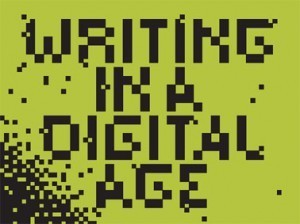At the recent TLC Conference in London, there was a Digital Masterclass on the 'Five Key Stages of Self-Publishing', in association with
SfEP (Society for Editors and Proofreaders) and
ALLi (The Alliance of Independent Authors).
I'm going to split this into two separate blog posts because there was a lot of information given.
**********
Dr Alison Baverstock, Course Leader for MA Publishing at Kingston University, made the following points:
1. Take careIt's very easy to self-publish a manuscript and the sites that you upload to won't check the content, the quality of the product.
She warned that negative responses to books can hurt and be damaging for a writer.
2. Think about the objectives.There are many different formats you can publish in. Consider the flexibility of formats.
3. Think of an e-book as a scroll.A digital book is flowing text. A reader can change the font and font size, as well as line spacing.
She went on to say that there is no restriction on the length of an e-book. With e-books, she says there is a much more level playing field between indie and traditionally published books because no one can really tell who published it.
She says it's best to make e-books widely available.
4. You don't have to do it on your own.There are various supports out there. Guides to formatting.
On Smashwords.com, for example, there is a free
style guide.
She mentioned
BookFlower a website where you can easily format your books on your own.
There was a demonstration of that website, and it does seem very easy to use to convert a document into an ePub.
Dr Baverstock also recommended the book
Let's Get Digital: How To Self-Publish, And Why You Should, by David Gaughran.

She also recommended
Jutoh.comShe gave a few tips for effective distribution:
The aim is to drive traffic to your book. Social media is useful. She recommends trying one thing at a time; changing one variable at a time to see what works and keep a record to learn from.
In regard to the question as to how much to charge for an e-book, she stated that we often underestimate how much people are willing to pay. The presentation of the book is important. We should not look at price in isolation. There are other factors that influence the decision to buy a book.
5. Gain vital market informationWhether you're self-published or published by a traditional publishing house, authors need to get involved in media/marketing. Publishers have become more reliant on authors for this.
Wendy Toole, Chair of the SfEP, stressed the importance of editing.
She said that at least 2 of the following should be done before publishing:
1. Get a manuscript assessment/critique
2. Developmental/structural editing
3. Copy edting
4. Proofreading
She said that it's best to use SfEP members, and also recommended
TLC's services. She said you could also use someone who has been personally recommended to you by another author whose books are well-edited.
It was also stated that it's best to get your manuscript into the best shape possible before sending to an editor as this will save time and expense.
***********
In Part II of this part of the series, I will tell you what the speakers said about cover design and font type, and also pass on some tips from an author who switched from traditional to self-publishing.

 newest »
newest »
 newest »
newest »
 Some great information, thanks.
Some great information, thanks.





